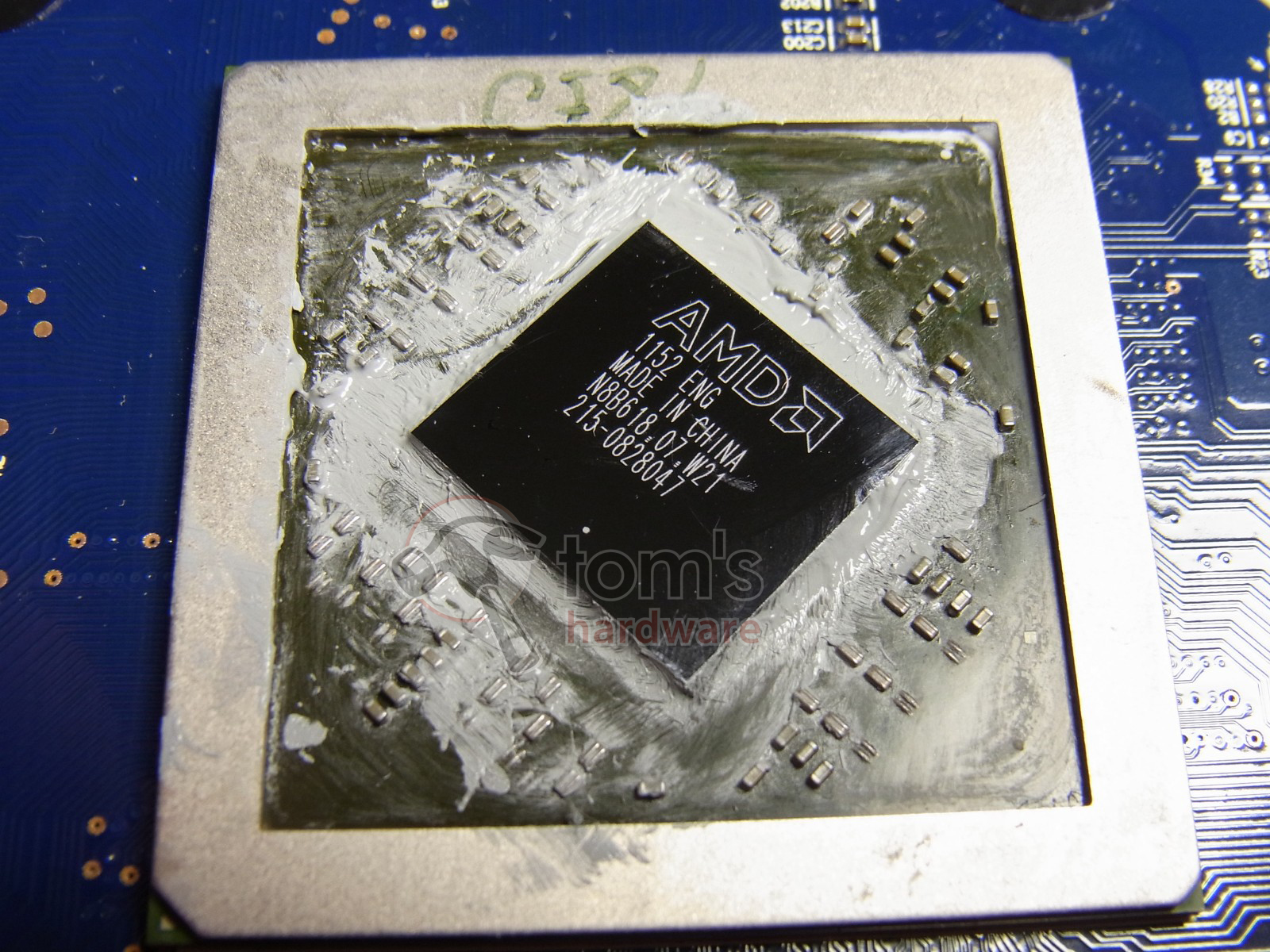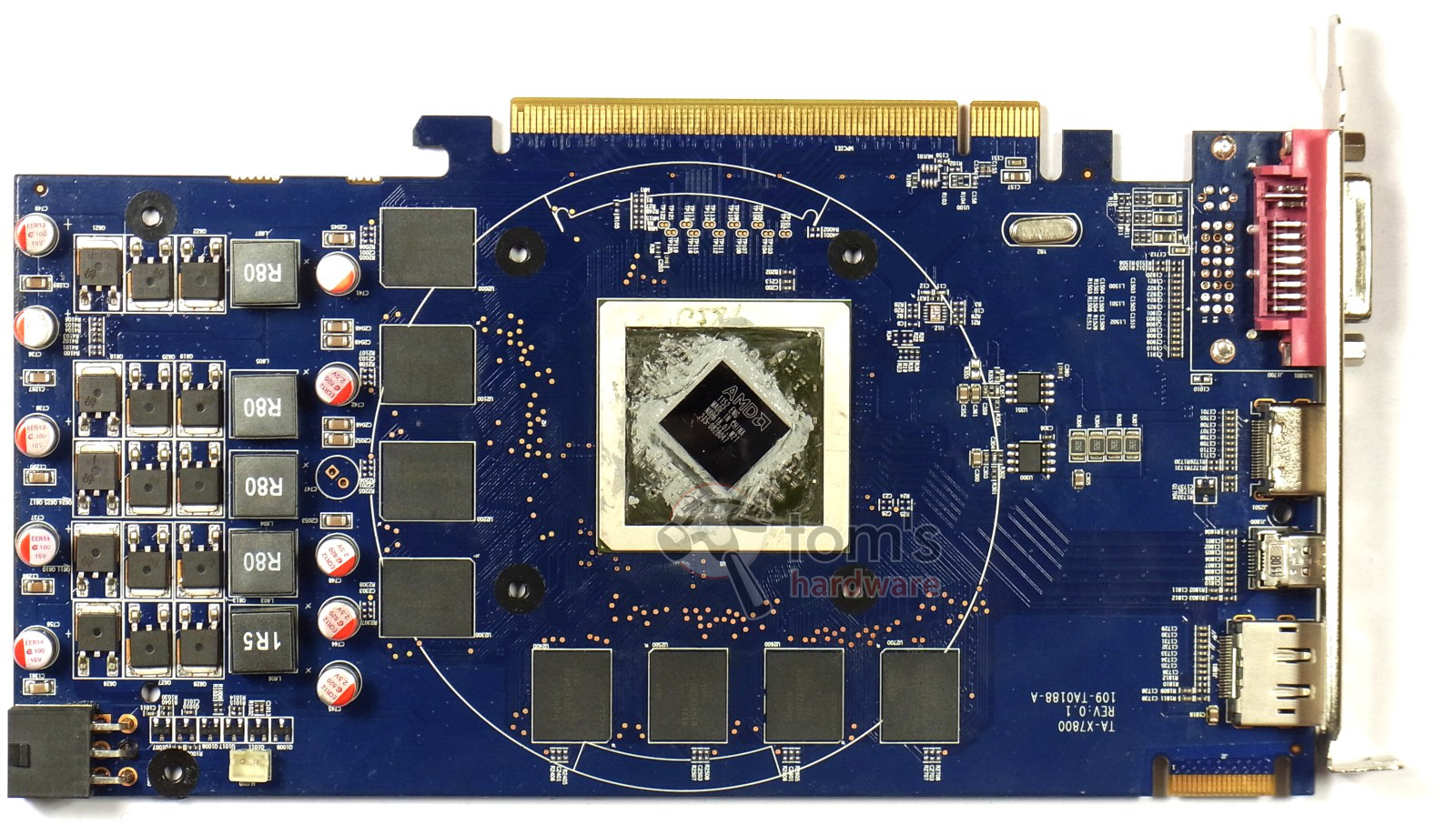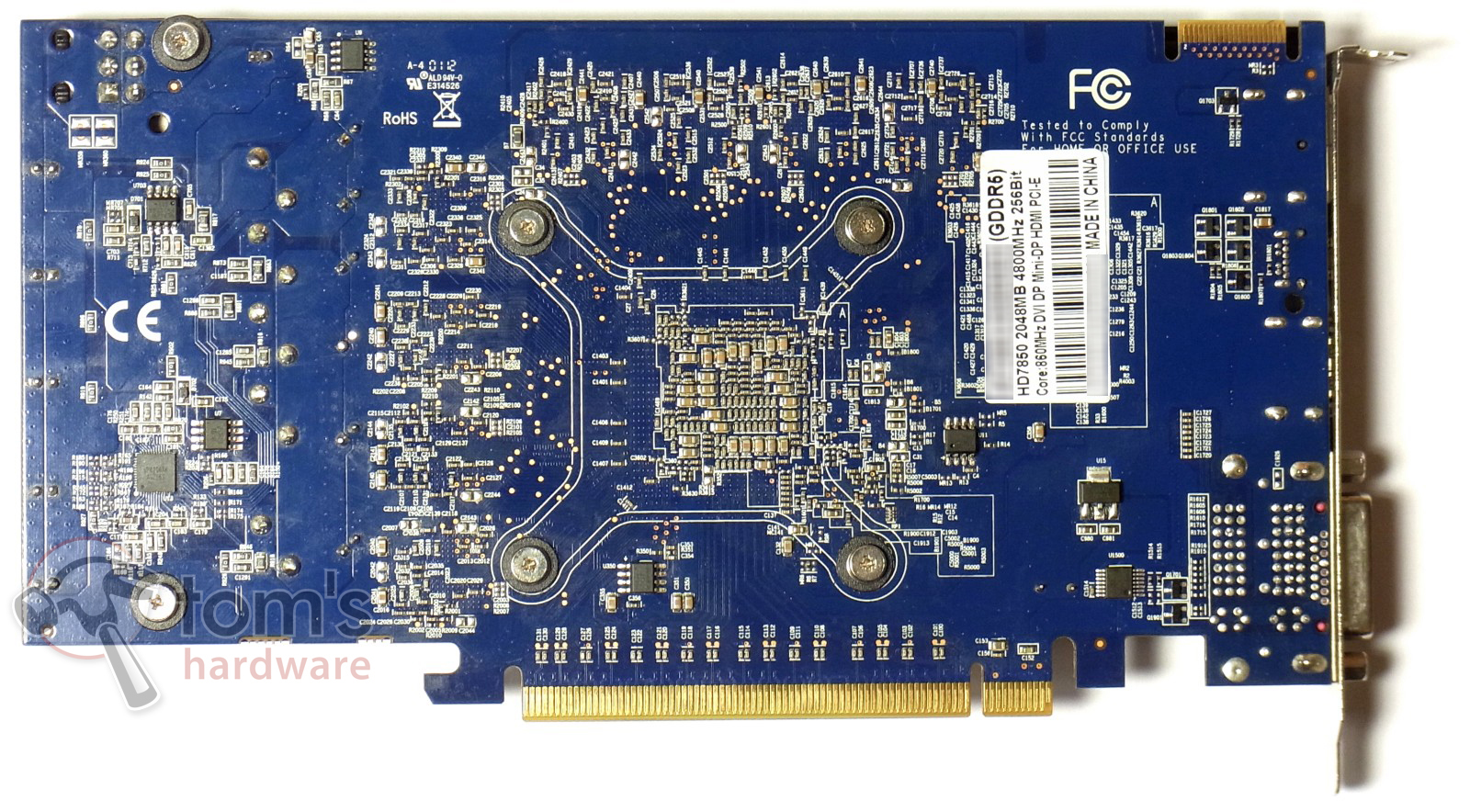Benchmarking AMD's 768-Shader Pitcairn: Not For Public Consumption
Last week we reported that an engineering sample card with 768 shaders accidentally found its way into our lab instead of the HD 7850 we were expecting. This GPU may be meant for engineers, but it piqued our interest, since it happens to fill a large gap.
A Look At The Tech Specs
We can’t help but wonder why AMD leaves such a large gap in its line-up instead of plugging it with a card that would practically be without a direct competitor. Even overclocking our Radeon HD 7770 to 1.15 GHz doesn't reliably push it to that half-way point between a stock 7770 and 7850. So, filling the void by simply increasing the clock speed of an existing product is not an option for AMD. How about tacking on a few more shader units to a Cape Verde GPU? That seems just as unlikely since it requires a redesign.
Now, we could speculate that the yields for AMD’s Pitcairn chips are apparently so good that there simply aren’t enough partially-defective chips to “harvest” and recycle into a card that slots in between the 7700 and 7800 families (a move we’ve seen from AMD and other companies in the past). AMD's Radeon HD 5830 and Nvidia's GeForce GTX 560 TI 448 Core are good examples.
On the other hand, it's just good business to address an audience looking for a better card at a certain price point, even if it means artificially paring down an otherwise healthy existing product. Again, that’s something we’ve seen in the past on a number of occasions.
Here’s how our engineering sample would fit into AMD’s existing portfolio of GCN-based cards:
| Header Cell - Column 0 | Radeon HD 7770 | Radeon HD 7850768-Shader ES | Radeon HD 7850 | Radeon HD 7870 |
|---|---|---|---|---|
| Stream Processors | 640 | 768 | 1024 | 1280 |
| Texture Units | 40 | 64 | 64 | 80 |
| Full Color ROPs | 16 | 32 | 32 | 32 |
| GPU CLock | 1000 MHz | 860 MHz | 860 MHz | 1000 MHz |
| Texture Fillrate | 40 Gtex/s | 41.3 Gtex/s | 55 Gtex/s | 80 Gtex/s |
| Memory Clock | 1125 MHz | 1200 MHz | 1200 MHz | 1200 MHz |
| Memory Interface | 128-bit | 256-bit | 256-bit | 256-bit |
| Memory Bandwidth | 72 GB/s | 153.6 GB/s | 153.6 GB/s | 153.6 GB/s |
| Video-RAM | 1 GB GDDR5 | 2 GB GDDR5 | 2 GB GDDR5 | 2 GB GDDR5 |
| Transistors (Billion) | 1.5 | 2.8 | 2.8 | 2.8 |
| Manufacturing Process | 28 nm | 28 nm | 28 nm | 28 nm |
| Aux Power | 1 x 6-pin | 1 x 6-pin | 1 x 6-pin | 2 x 6-pin |
| Power Consumption (max. measured) | 80 W | 120 Watt* | 130 W | 175 W |
| Market Price(Newegg, May 08, 2012) | ~$149+ | ~$200+ (If we got our way) | ~$250+ | ~$330+ |
*Note: This is an engineering sample, not a final GPU.
Actually, the tech specs represent a pretty plausible starting point for our analysis, since a 25 percent reduction in shader units should translate to between 20 and 25 percent less performance, depending on the workload. Since we’re dealing with an engineering sample on a prototype board intended to bring up full Radeon HD 7850 cards, attributes like power consumption and heat don't bear the weight they would if we were looking at a piece of production hardware. Let’s not forget, the express purpose of the card we have in-house is to give board partners a way to tweak and improve their designs, bringing down power consumption and optimizing cooling on final boards. With that said, we don’t think AMD has anything to worry about, based on the numbers we got from our engineering sample. For what it is, the board returned completely acceptable results.
Even in its prototype stage, our review sample does not disappoint. So, without further ado, let’s get cracking on those benchmarks!
Get Tom's Hardware's best news and in-depth reviews, straight to your inbox.
Current page: A Look At The Tech Specs
Prev Page What If A 768-Shader Pitcairn Existed? Next Page Test Setup And Benchmarks
Igor Wallossek wrote a wide variety of hardware articles for Tom's Hardware, with a strong focus on technical analysis and in-depth reviews. His contributions have spanned a broad spectrum of PC components, including GPUs, CPUs, workstations, and PC builds. His insightful articles provide readers with detailed knowledge to make informed decisions in the ever-evolving tech landscape
-
s3anister I would never buy this card for myself but I would find myself recommending a 1GB model, like you mentioned, to family and friends. If the price is right AMD could have a great mid range card.Reply -
wolley74 while a nice card, the 6850 is incredibly close and nearly $60 cheaper, the only thing is it does consume more powerReply -
slomo4sho Wouldn't 2 7750s in crossfire perform better than this rig and also consume less power at the ~$200 price point?Reply -
erraticfocus Slomo4shOWouldn't 2 7750s in crossfire perform better than this rig and also consume less power at the ~$200 price point?Reply
Maybe, depending on your local market, but the single slot and price point is the whole point to this... -
pwnorbpwnd This card would be an AMAZING pick for an HTPC, Single slot, Low power, 2gb DDR3 for HDTV's, not to say 1gb wouldn't be okay. But really AMD, do it up! All of this positive feedback is great reason to make a crippled 7850!Reply -
weatherdude This card performs great and a 1 GiB version selling at ~$200 would fill in a very large gap in the market. It would only make sense if AMD is cooking up something they'll likely call a 7830 to do just that. I guess though it would differ from this engineering sample if they're so insistent that they aren't bringing it to market. Maybe it'll have less texture units or ROPs.Reply
Still this card with 1 GiB at ~$200 would be pretty sweet AMD *nudge* *nudge*.


